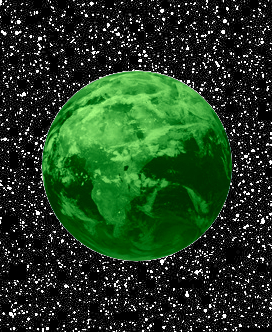New home on horizon but holidays still far off
 An international team of astronomers have announced the discovery of a near-Earth-sized planet in the habitable zone of a Sun-like star – the most appropriate replacement for Earth ever spotted.
An international team of astronomers have announced the discovery of a near-Earth-sized planet in the habitable zone of a Sun-like star – the most appropriate replacement for Earth ever spotted.
The discovery has an Australian angle too, with Dr Daniel Huber from the University of Sydney's School of Physics part of the team that made the find with NASA's Kepler Space Telescope.
The planet is named Kepler-452b, though many have rushed to dub it ‘Earth 2.0’ or ‘Uptopia’, but living there would be pretty difficult. It is 60 per cent larger than Earth and so could have 60 per cent more gravity.
If humans ever did colonise it, the face-lift industry would be massive, while calf muscles could become the new biceps.
But the mere 20 day difference between the planet's orbital period and that of Earth's makes it the closest analogue to Earth ever discovered. The planet is located within the habitable or ‘Goldilocks’ zone, defined as the range of distance from a star where liquid water could pool on the surface of an orbiting planet.
The research paper reporting the finding, led by Jon Jenkins from NASA's Ames Research Centre, has been accepted for publication in The Astronomical Journal.
Co-author Dr Huber contributed to the characterisation of the host star which is crucial to understanding the properties of the planet.
“Kepler-452b has similar characteristics to our Sun, which makes finding a planet with an orbital period similar to Earth in this system very exciting,” said Dr Huber.
“Kepler has previously demonstrated that Earth-sized planets are common, but most planets found in habitable zones are orbiting stars which are cooler than the Sun. Kepler-452b is in many ways the closest analogue to an Earth-like planet that we know of to date.”
The newly discovered planet is located about 1,400 light-years from Earth in the constellation Cygnus, meaning it would be a long trip to get there, even at light-speed.
Although the size of Kepler-452b is known, its mass and composition are not.
Based on its radius the team says there is a good chance that the planet has a rocky composition.
“The system is too distant to determine whether it has an atmosphere, so we don't know whether it has the right conditions to harbour life,” said Dr Huber.
“However, discoveries such as Kepler-452b provide important clues about how abundant Earth-like planets are in our galaxy, and about the prospects for finding such planets closer to home.”








 Print
Print